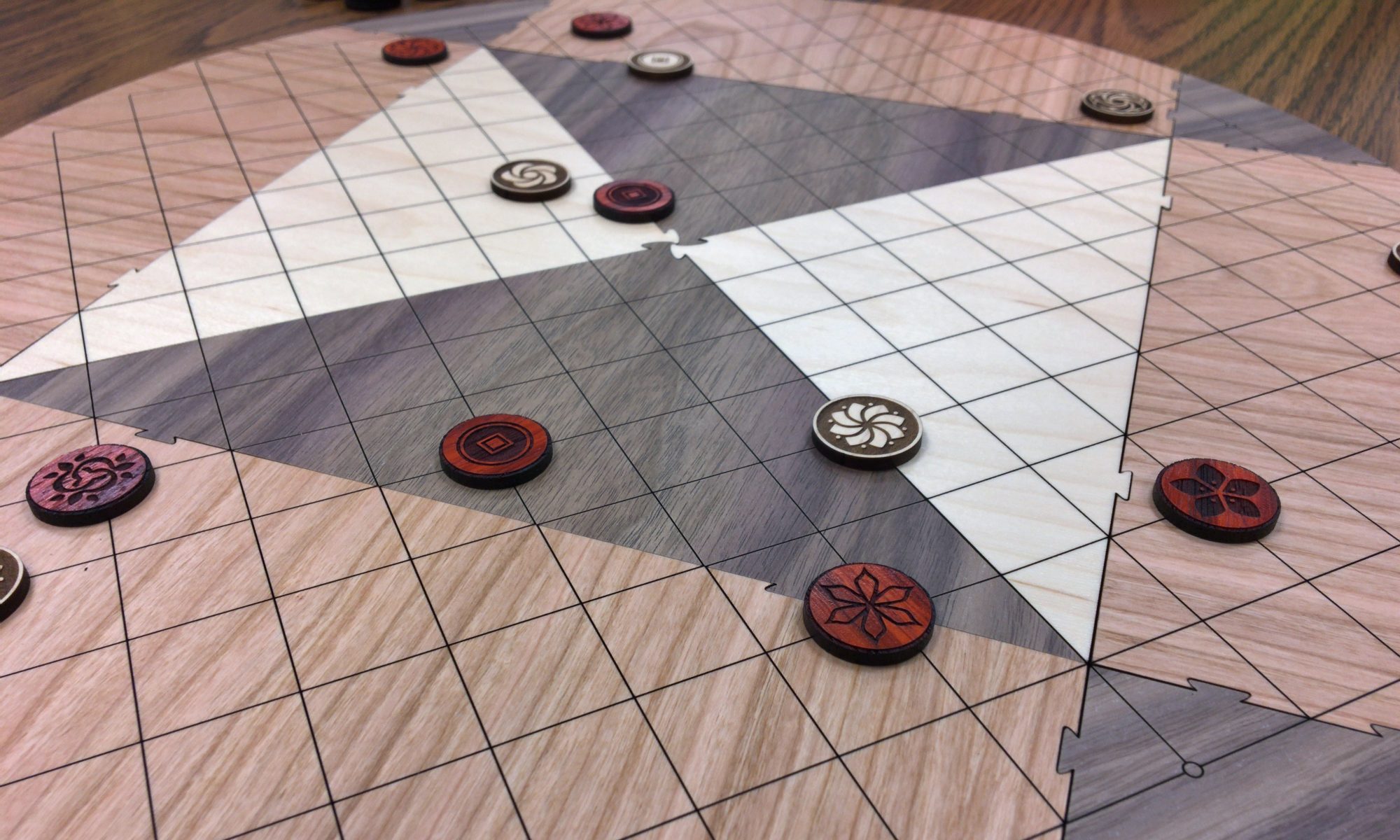When looking at Pai Sho in the Avatar series, there are no rules given to us and the game is portrayed very inconsistently whenever it is on screen. We see a handful of tile designs throughout the different episodes that Pai Sho makes an appearance, and we see tiles being placed and sometimes moved around the board – sometimes on the spaces, sometimes on the points. Even the board itself is shown at different angles and several sizes (that is, with a different number of lines) throughout the few scenes that show it, and is even seen with grid lines running diagonally compared to most other times. So when we see Pai Sho on screen, there seems to be no actual game in mind from the people that brought us Avatar: The Last Airbender and The Legend of Korra.
For an example of some of the different ways Pai Sho is portrayed in the series, see this video put together by a prominent member of The Garden Gate community. The title of the video, “Which fan-made Pai Sho variant is closest to what we see in the show?” is a question many people have, but – spoiler alert! – the answer is not clearly any one single game. For the conclusions drawn in the video, though, you’ll have to watch it through to the end! With how inconsistently Pai Sho is given to us, the different Pai Sho games available at The Garden Gate could fit into the world of Avatar in different ways, each having some aspects that feel more like the Pai Sho we see on screen than the others.
In the ATLA Book 2 episode The Desert we see Iroh and a stranger named Fung play out the White Lotus Gambit formation. This scene is the most specifically focused on Pai Sho, and the well-known shot of the tile formation on the board from this episode is where the standard size (number of lines) board comes from and also the idea of playing with the tiles on the intersections of the board – nearly all other sightings of Pai Sho have the tiles being played on the spaces of the board instead.
So what game looks the most like what we see? The White Lotus Gambit formation can be played out in Solitaire Pai Sho and its variants. Skud Pai Sho uses a flower arranging theme inspired from The Desert. Adevăr Pai Sho is played on the spaces and also has a flower tile theme but adds a unique hidden truth element, which may very well give players a feeling of sitting with The Order of the White Lotus. Vagabond Pai Sho interprets the tiles seen in the series differently and, while keeping the idea of some tiles representing flowers, is yet another very different kind of game, and it comes from a fanfiction story that shows the game beautifully in the world of Avatar. Other games like Capture Pai Sho simply accept the fact that they are not the Pai Sho game seen in Avatar and don’t try to resemble it in the kind of tiles used in the game.
Most of the Pai Sho games look more like the Pai Sho we see on screen than others in at least some way. But one of the most important aspects in thinking about how well our Pai Sho games fit with what we know to be Pai Sho in the series doesn’t involve comparing the tiles used or how they’re moved around the board or even how well the theme of the game matches the world we see it come from. Iroh plays this game. It is ancient. It has permeated cultures around the world through history. To know if a Pai Sho game fits the world of Avatar, we need to look at how good the game is.
So, what’s the best Pai Sho game? It isn’t something I can tell you. You need to answer it for yourself. What game do you most enjoy? What game is the best game for you? Take a look and try the ones you haven’t yet played!
However, Some of the Pai Sho games have especially proven themselves to be great. These games are Skud Pai Sho, Vagabond Pai Sho, and Adevăr Pai Sho.
Skud Pai Sho, the game that The Garden Gate grew from, is the most played Pai Sho game and stands as a unique game among games, as there isn’t any other game quite like it. Avid players keep coming back to this game and it is standing the test of time.
Vagabond Pai Sho, the most chess-like game of the three most popular, has a unique twist of being a chess-like game that also includes a dynamic placement phase. This, along with the unique abilities of the tiles, draws players in and has given Vagabond Pai Sho a steady player base since it was built into The Garden Gate.
Adevăr Pai Sho is another incredibly unique game, having different objectives players can choose from to attempt to win the game. Bluffing tactics are often important during play in order to keep players’ chosen objectives secret, because revealing them could cost the game! Because of the variety and replay value built into this game, Adevăr Pai Sho has found itself to be an instant classic among its players.
If you are looking for a Pai Sho game that Iroh would sit down and play with you over a cup of tea, I highly recommend these three. But don’t miss the others! You never know what game will find itself to be a classic on your table.
